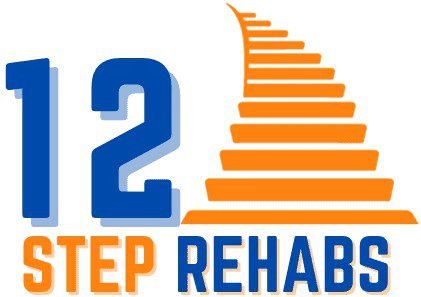Cocaine & Crack Cocaine Addiction
Cocaine/Crack Cocaine Addiction: Definition, Signs, Side Effects, and Treatment
Cocaine and crack cocaine addiction are serious conditions that stem from the use of powerful drugs derived from the coca plant. Cocaine is usually snorted in its powdered form, while crack cocaine, a crystallised version, is typically smoked. Both substances rapidly alter brain chemistry, producing a brief, intense high that often leads to repeated use as individuals try to recapture that fleeting sensation.
The grip of cocaine addiction, or cocaine use disorder, can be overwhelming, creating an intense, sometimes uncontrollable urge to use despite the harm it causes. This addiction not only changes behaviour but also affects mood, mental health, and overall well-being. Over time, the physical and psychological toll can make it difficult to imagine life without the drug.
How Common is Cocaine/Crack Cocaine Addiction?
Cocaine and crack cocaine addiction remain major public health concerns worldwide, particularly in regions with high levels of availability. According to a press release published by the United Nations Office on Drugs and Crime (UNODC), approximately 23 million people use Cocaine globally. Understanding the prevalence of cocaine addiction is crucial for addressing its impact on individuals and society. Cocaine addiction not only affects the health and well-being of the user but also has broader social and cultural implications. The societal costs of cocaine addiction include increased crime rates, burdened healthcare systems, and economic losses due to decreased productivity. Additionally, the cultural stigma associated with crack cocaine use often worsens the challenges faced by those struggling with addiction, making it harder for them to seek help and recover.
Why is Using Cocaine/Crack Cocaine Addictive?
Cocaine’s addictive nature is primarily due to its potent effects on the brain’s reward system. When consumed, cocaine blocks the reuptake of dopamine, a neurotransmitter associated with pleasure and reward, in the brain. This blockage causes a buildup of dopamine, leading to intense feelings of euphoria, increased energy, and heightened self-esteem. However, these effects are short-lived, lasting only about 15 to 30 minutes for cocaine and even less for crack cocaine.
The rapid onset of the high, particularly with crack cocaine, also contributes to its highly addictive potential. When smoked, crack cocaine reaches the brain almost instantly, producing an intense but brief euphoria. This rapid and intense high makes crack cocaine particularly addictive, as users quickly develop a craving for the drug’s effects. Over time, repeated use alters the brain’s chemistry, leading to tolerance, where larger doses become needed to achieve the same effects, and dependence, where the brain requires the drug to function normally.
Is Cocaine/Crack Cocaine Addiction Addictive from the First Try?
Cocaine and crack cocaine are among the most addictive substances, and for some individuals, addiction can begin after the first use. The intensity of the initial high can create a powerful desire to experience the same effects again, leading to repeated use and, eventually, addiction. While not everyone who tries cocaine or crack cocaine will become addicted immediately, the risk is significantly higher than with many other substances. Factors such as the method of use (smoking crack cocaine vs. snorting powder cocaine), the dose, and the individual’s psychological and genetic predispositions all influence the likelihood of developing an addiction from the first use.

Signs of Cocaine/Crack Cocaine Addiction
Recognising the early signs of Cocaine or Crack Cocaine addiction is vital in seeking the help you or a loved one may require. If you or someone you care about is battling this struggle, these warning signs could be the first step toward recovery:
- Physical Signs: These may include frequent nosebleeds (from snorting cocaine), dilated pupils, rapid weight loss, lack of hygiene, and insomnia. Crack cocaine users may also have burn marks on their lips or fingers from smoking.
- Psychological Signs: These involve intense cravings for the drug, anxiety, paranoia, hallucinations, and mood swings. Users may also experience depression during the crash that follows the high.
- Behavioural Signs: These include neglecting responsibilities at work or home, engaging in risky behaviours to obtain the drug, using cocaine in dangerous situations, and continuing to use despite negative consequences. Users may also exhibit erratic or aggressive behaviour, particularly during withdrawal or when the drug is not available.
Causes, Effects, and Treatments
Causes of Cocaine Addiction
Cocaine addiction is influenced by a combination of genetic, psychological, social, and environmental factors:
- Genetic Factors: Some individuals may be genetically predisposed to addiction due to variations in genes that affect the brain’s reward system. These genetic differences can influence how the brain responds to cocaine, making some people more susceptible to addiction.
- Psychological Factors: Individuals with underlying mental health conditions, such as depression, anxiety, or bipolar disorder, may use cocaine as a form of self-medication. The drug’s stimulating effects can temporarily alleviate symptoms, leading to a cycle of dependency.
- Social and Environmental Factors: Social pressure, exposure to environments where cocaine use is prevalent, and easy access to the drug can all contribute to the development of cocaine addiction. Additionally, individuals who experience trauma, stress, or economic hardship may be more likely to turn to cocaine as a coping mechanism.
Side Effects of Cocaine Addiction
Short-Term Effects:
Cocaine use, even in small amounts, can lead to several immediate and dangerous side effects, including:
- Increased heart rate and blood pressure, which can lead to heart attacks or strokes
- Hyperstimulation and euphoria, followed by irritability and paranoia
- Decreased appetite and sleep disturbances
- Risky behaviours, such as unsafe sex or violent actions, due to impaired judgement
Long-Term Effects:
Chronic cocaine use can cause severe and lasting damage to the body and mind, including:
- Cardiovascular problems, such as heart disease and arrhythmias
- Respiratory issues, particularly for crack cocaine users, including chronic cough and lung damage
- Neurological damage, including seizures, headaches, and movement disorders
- Mental health disorders, such as depression, anxiety, and psychosis, which may persist even after stopping the drug
Treatment Methods for Cocaine Addiction
- Rehabilitation Programs: Inpatient rehabilitation provides a structured and supportive environment where individuals can focus entirely on their recovery. According to studies conducted in the US, individuals who complete residential rehab programs have a higher chance of achieving long-term sobriety compared to outpatient treatment, which offers more flexibility but may provide less intensive support.
- 12 Step Model: Initially introduced by Alcoholics Anonymous (AA), this method has become a cornerstone in recovery programs including Narcotics Anonymous (NA). It is now widely acknowledged as one of the most effective strategies for treating various types of addiction. The program guides individuals through a process of deep self-reflection, acknowledging past mistakes, making amends, and fostering spiritual growth. It also treats addiction as a chronic condition that requires continuous care, providing access to 12 Step Meetings globally, helping individuals build a lasting support network beyond the confines of formal treatment.
- Cognitive Behavioural Therapy (CBT): CBT is an evidence-based therapy that helps individuals understand and change the thought patterns and behaviours that contribute to their cocaine use. By addressing the cognitive distortions that fuel addiction, CBT can significantly improve the chances of long-term recovery.
Aftercare Programs: Ongoing support is crucial for preventing relapse. Aftercare programs may include continued therapy, participation in support groups, and living in sober environments. These programs provide the necessary support and resources to help individuals maintain sobriety and rebuild their lives without cocaine.
How is Cocaine Withdrawal / Overdose Treated?
Cocaine overdose requires immediate medical attention. Emergency treatments include administering activated charcoal, intravenous fluids, and medications to manage heart rate, blood pressure, and seizures. Benzodiazepines are often used to calm the nervous system and prevent complications. In severe cases, cooling techniques may be needed to lower body temperature.
Treatment for cocaine withdrawal typically involves supportive care, including hydration, nutrition, and medications to manage symptoms such as anxiety or insomnia. In severe cases, individuals may require inpatient care to ensure their safety and provide intensive support. Behavioural therapies, such as CBT, are also used during withdrawal to help individuals cope with cravings and prevent relapse.
How to Help a Person with Cocaine Addiction?
Supporting someone with cocaine or crack cocaine addiction requires compassion, patience, and a non-judgmental approach. Here are some ways to help:
- Encourage Open Communication: Approach the person with empathy and express your concerns in a supportive, non-confrontational manner. Let them know that you care about their well-being and are there to support them through their recovery journey.
- Educate Yourself: Understanding cocaine addiction can help you offer more informed support. Learning about the signs, symptoms, and treatment options will enable you to provide meaningful guidance and encouragement.
- Suggest Professional Help: Overcoming cocaine addiction is incredibly difficult without professional support. Encourage the person to seek help from addiction specialists, counsellors, or rehabilitation programs that can provide the necessary resources for recovery.
- Explore Treatment Options Together: Assist the person in exploring available treatment options, such as counselling, inpatient or outpatient rehab, and aftercare programs. Offering to accompany them to appointments or meetings can also provide moral support.
Embarking on the path to recovery can feel overwhelming, but with the proper support and resources, it’s entirely within reach. At 12 Step Rehabs, we’re dedicated to helping you or your loved one discover the treatment approach that aligns with your needs. Our compassionate team, with over 25 years of combined sobriety and firsthand experience in recovery, is here to guide you every step of the way. For tailored support, book your free consultation today and begin your journey toward a healthier, sober life.


